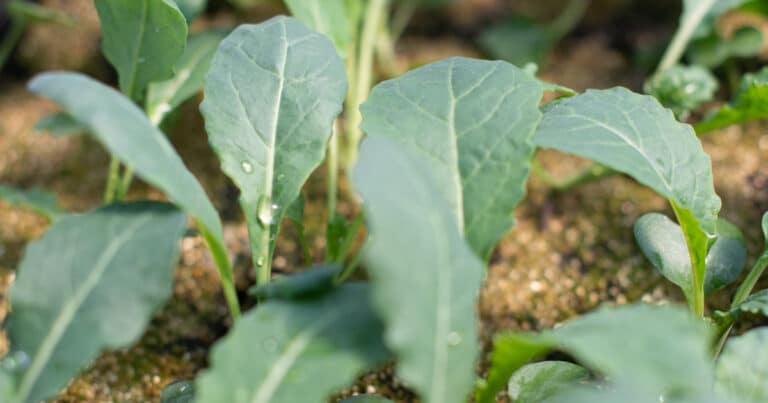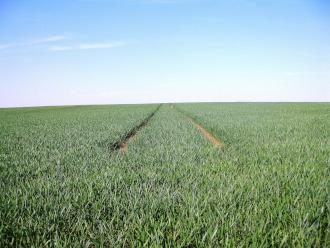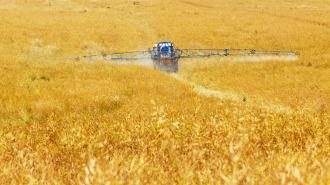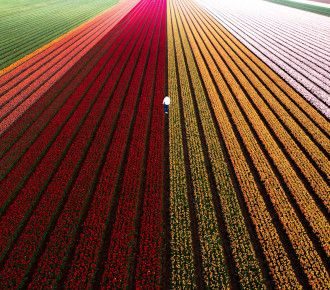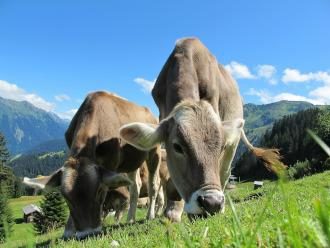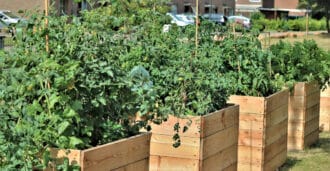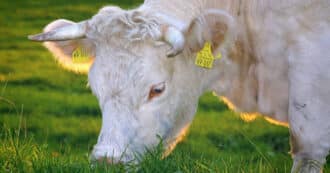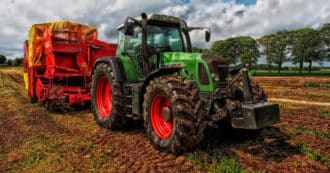By Harry Cooper – There are many people out there that talk about how the food system needs fixing, and about how we need to make our industries more sustainable. But what does this actually mean?
In reality, sustainability is more of a philosophical concept than a scientific one. Making our industries and lifestyles sustainable means being conscious of the long and short term effects of the choices we make in our production processes and our everyday lives.
Fixing the Food System
We have found that many things we do are very harmful to the planet and the people that live on it. Part of a sustainable mindset is trying to find ways to function as a society that aren’t going to deplete our resources or put the public health at risk. When we run our industries and our lives with sustainability in mind we create new systems of operating and living that can be more beneficial and be “sustained” for longer.
One of the biggest industries that sustainability advocates are trying to change is the agricultural industry. Growing food relies on natural systems that have been in place for thousands of years, and drastically altering these systems to grow food for humans has put a lot of strain on the environment.
This has created a catch-22 for humanity. We need food to survive, but by exploiting the land to provide that food we are destroying the environment that we, and so many other species, rely on.
However, sustainable regenerative agriculture is not an impossible reality. Environmentalists have identified many specific issues with our current agricultural systems, and have come up with solutions that could lead to a healthier planet, healthier people, and healthier farms.
Industrial Agriculture
The current agriculture sector is fraught with problems. In order to understand these problems, it is important to understand the industrial mindset.
During the industrial revolution, every industry underwent radical changes; new technology was implemented into the production process, goods started becoming mass produced, and production became focused on making as much as possible, as efficiently as possible. Among these industries that became industrialized was agriculture.
By the end of the 1800s, agriculture looked completely different than it did before. Small scale farms that centered around local rural communities would eventually become large scale industrial farms that were focused on producing one or two different products to increase food production.
These dramatic changes to the scale and diversity of these farms were based around prioritizing efficiency in food production. When we look at these farms from a productive standpoint, it is easy to rationalize why early industrialists abandoned community style farms for more factory style ones.
Industrial Agriculture Techniques
The industrial revolution drastically changed what agriculture looked like. These changes included how the farm was organized, and the different technologies used.
One of the biggest organizational changes was a decrease in diversity on farms. Before the industrial revolution, farms would often grow multiple crops and have a variety of animals on their farms.
After industrialization farms typically only grew one or two types of crops, or raised one or two types of animals. This largely separated the dairy and meat industry from the farming industry, and was done to allow farmers to specialize and focus on producing as much as possible of one thing.
Another tactic done to increase productivity on farms was using more industrial machinery. Using large machines to sow seeds and harvest crops allowed more work to be done in a shorter amount of time and made human labor less necessary.
Large machinery was not the only new technology to be used on industrial farms. Many farmers started relying on chemical additives to help grow their crops and raise their animals.
These chemicals came in the form of fertilizers and pesticides that artificially made better growing conditions for plants. Livestock was also given hormones, modern medicine, and underwent genetic modification in order to make them produce more meat, dairy, and eggs.
One of the most notable changes is the scale at which farms began to operate. Instead of small farms centered on rural communities, the agricultural industry shifted to consisting of only a handful of massive farms.
This consolidation of smaller farms into bigger ones caused the market for agricultural products to be dominated by a small number of companies. This centralized food production and made it so that most food in America comes from only a few different locations.
The Effects of Industrial Agriculture
The industrialization of agriculture did what it was meant to do. It made food systems that produced cheaper food in a more efficient way.
After the industrial revolution there was more food security as more people were being fed. The chemicals used to grow and preserve food also allowed food to stay on shelves longer.
Overall, industrial agriculture made food cheaper and more widely available. But while at first glance industrial agriculture improved food security, it came with some detrimental consequences too.
The Environmental Impacts of Our Food System
Agriculture is more than just the way that humans feed themselves; it is a complex and scientific system that relies on systems found in the natural world. And when industrialists implemented new techniques into the agricultural system, they paid little regard to the consequences they had on the planet.
Biodiversity Loss
Before the industrial revolution farmers would grow multiple crops and often leave certain fields empty some years. This practice was a much more regenerative agriculture than what is done today.
Massive fields that grow only one type of crop every year put a lot of strain on soil health and the environment. This strain mainly comes in the form of biodiversity loss.
When an industrial farm uses a large field for only one crop, they replace land that was once used for multiple crops, or even diverse natural environments that were habitats for numerous different types of animals. Preindustrial farms used more regenerative agriculture practices such as crop rotation. However, monoculture farms are devastating for soil health, deplete soil fertility and cause soil erosion.
Monoculture farming also made worse growing conditions for the crops themselves, which made it necessary for farmers to try and improve growing conditions artificially with chemical pesticides and fertilizers. These chemical additives further decreased biodiversity, as they did little to improve soil health, and ended up polluting local water bodies, and water quality to the point where little to nothing can live there.
Greenhouse Gas Emissions
The implementation of new technology has made the agricultural sector a major contributor to climate change. This is because many of these technologies involved producing massive amounts of greenhouse gas emissions.
Some of these new technologies includes the production of nitrogen fertilizers, which is a very energy intensive process that emits massive amounts of nitrous oxide. Along with this, the new massive machinery used to tend to farms often required burning fossil fuels for their operation resulting in releasing carbon dioxide and consequently further contributing to global greenhouse gas emissions.
However, it was not just the new technologies contributing to climate change but also the new massive amounts of livestock found on industrial farms which emit methane gas that is detrimental to climate health. Thus through new technologies and larger scale farms, modern agriculture has become a primary contributor to climate change.
That said, agriculture is not just a factor causing climate change, but also a victim of climate change. This is because agriculture relies heavily on consistent seasonal temperatures and rain patterns. Thus when climate change makes certain seasons hotter, drier, or changes any factor that crops or livestock rely on a farm could be in serious trouble.
The Economic and Social Impacts
In addition to the environmental impacts of industrial farms, the modern farming system has also created and perpetuated inequality and social consequences. This is mainly an issue about equal access to land since by consolidating our farming systems into a small handful of large farms owned by a few companies, it has driven out and prevented new small farms from growing as businesses.
This unequal access to land has a darker history than many initially realize. A lot of the consolidation of farms that created these large industrial farms were a result of racist laws and policies that prevented African Americans, indigenous peoples, and other minorities from owning land.
Now that most farm land is owned by big companies, new farms find themselves in an increasingly competitive market that is hard to survive in. Not only does industrial agriculture negatively affect the environment, but it also creates an unequal access to land that makes it harder for small farms to turn a profit.
Regenerative Organic Agriculture
With so many problems created by our modern agricultural system, sustainability advocates are very adamant about making changes to our food system. While modern farming systems are harmful to soil health and the environment, growing large amounts of food is essential for supporting such a large global population.
Because of this many people are advocating for regenerative agriculture. Regenerative agriculture is a more sustainability driven type of growing food. While there is no one way to do regenerative agriculture, there are certain regenerative agricultural practices that attempt to solve some of the problems caused by current farming methods in order to produce food in a way that is healthier for humans, the economy, and the environment.
Crop Rotation and Cover Crops
One way to make a farm run naturally more smoothly is through using crop rotation. This practice is incredibly important for establishing healthy soil and healthy plants.
Crop rotation involves planting different crops in different parts of a farm each year. This creates significantly better growing conditions for crops than using one massive field for one kind of crop each year.
Most crops rely on specific nutrients in the soil and are targeted by specific bugs and pests. When you plant the same plants in the same places each year the nutrients needed by plants is depleted from the soil, and pests find themselves with a consistent place to call home.
Crop rotation provides a simple solution to this. When crops are rotated their soils are able to keep a balanced level of nutrients, and pests find it harder to stick around on a farm.
This practice is simple but essential. Since industrial farms usually grow only one crop they find themselves with poor soil health and lots of pests. This makes it so that industrial farms have to rely on ever increasing amounts of chemical fertilizers and pesticides to keep their farms up and running, something that farms practicing regenerative agriculture don’t have to worry about.
Another example of a regenerative agriculture technique that creates healthy soil is the use of cover crops. These are specific plants that a farmer grows in a field during an offseason that they don’t intend to sell, but rather are only there to improve soil health.
Cover crops work by regulating soil nutrients rather than depleting them. By planting them in a field instead of a cash crop it lets the soil replenish its nutrients to make for a more bountiful harvest the next time something is planted there.
Not only that but cover crops can choke out weeds and prevent them from growing and taking over. Along with this, when cover crops die they create a natural mulch on the ground that helps other plants grow, and prevents weeds from growing.
Regenerative Grazing
Livestock can also help increase a farms overall health. This is done through allowing livestock to graze in specific strategic parts of a farm.
Similar to crop rotation, allowing certain plots of land to be grazed on by livestock at certain parts of the growing season can have numerous benefits. Grazing allows cows and other animals to regulate the growth of cover crops which can help prevent weeds from growing. Along with this, the manure produced by cows contains vital nutrients which help build an even healthier soil.
Allowing livestock to graze on farms can be excellent for bountiful harvests and increasing biodiversity. Modern industrial farms which often don’t mix livestock and crops are unable to get the benefits of this kind of regenerative grazing.
Religion and Regenerative Agriculture
Pastor Sam Chamelin is on a mission to spread the gospel of God and regenerative agriculture. He describes in an article on Bearings Online his “vision of rural renewal through regenerative agriculture and ecological conservation, all rooted in radical Christian faith”. For Pastor Chamelin, regenerative agriculture is a spiritual mission, deeply embedded in religious beliefs. Pastor Chamelin’s community, The Keep & Till, is merging regenerative agriculture and religion, and he’s not alone.
People from every faith tradition are rising to the challenges of our time, and aren’t afraid to get their hands dirty in the process. Faithlands is a “growing national movement to connect and inspire faith communities to use their land in new ways that promote ecological and human health, support local food and farming, enact reparative justice, and strengthen communities”. Faithlands is showing how our faith can unite us to protect the land we farm for future generations, especially by transforming the land held by religious institutions “into sustainable gardens and farms for the greater good of the land and all who depend on its bounty for sustenance and well-being”. Our religions hold great wealth, both in terms of physical assets and spiritual traditions. Using this wealth to promote regenerative agriculture is one of the greatest investments we can make.
* Featured image source
Interested in learning more? Check out our post on The Principles of Sustainable Development.

